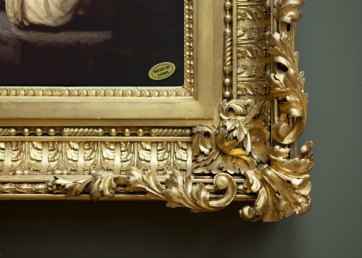The other day, the Dulwich Picture Gallery announced a 2015 program with “an intervention in the Gallery’s permanent collection offering a provocative challenge to the public.” And what could that be?
 Rather provocatively, it’s an exhibition called Made in China, and it’s described this way in the press release, as
Rather provocatively, it’s an exhibition called Made in China, and it’s described this way in the press release, as
…a unique intervention that questions the significance and value of the ‘original’ work of art. ‘Made in China: A Doug Fishbone Project’ (10 February–26 July 2015), will see one of the paintings in Dulwich’s collection removed from its frame and replaced with a replica, the identity of which will be concealed. Conceptual artist Doug Fishbone has selected the work and commissioned a replica from one of China’s numerous exporters of handmade oil paintings. In a Gallery context it is entirely plausible that such a replica, presented as an original, be taken as such without question – where then does a painting’s identity, value and authorship reside? ….
In the exhibition description, the Dulwich says the point is to get people to take a closer look at the collection–well, that’s the goal of every art museum, or should be: “Test your discerning eye and tell us which painting you think it is.” The description continues:
Many Old Master painters, from Titian to Rubens, encouraged the copying of their work either in their workshops by apprentices or by independent copyists. There are several examples in Dulwich’s collection including workshop paintings such as Venus and Adonis and copies painted from the original by artists visiting the Gallery such as Constable’s copy of Ruisdael’s Windmills. Today, famous paintings are being reproduced in the millions with China dominating this export market.
…Winning answers will be entered into a draw to win one of five print-on-demand reproductions of chosen works in the Gallery’s collection. The answer will be revealed on 28 April …
There’s a video explanation (or trailer) here.
Is a good idea? I certainly agree with the goal. Here’s the problem, dug out by The Independent:
Close to 2,000 visit the south London gallery a week during a temporary exhibition, which tumbles to just 200 for just the permanent collection.
Over at The Guardian, though, critic Jonathan Jones takes a dim view of the exercise:
…It will confuse the public, undermine the pleasure of looking at the great paintings on its walls, and replace the joy of learning about art with a glib postmodern game that is pretentious and destructive….
…The easy claim that replicas are just as good as the real thing and no one can tell them apart anyway is now a hackneyed idea, recently wheeled out like the most boring of dinner party bons mots when the V&A reopened its Renaissance cast court….
…It’s shallow and trite to misunderstand the V&A’s amazing casts as better than the real thing when what they really do is supplement and contextualise this museum’s great collection of original works.
It is equally daft to think a hidden fake adds to the interest of Dulwich picture gallery’s paintings. The anxiety it creates can only detract from a genuine experience of the collection. Museums should not join in the moronic celebration of the replica. Their job is to preserve originals, and make those accessible. Art only matters when it is the real thing.
Nonetheless, I support the goal.
